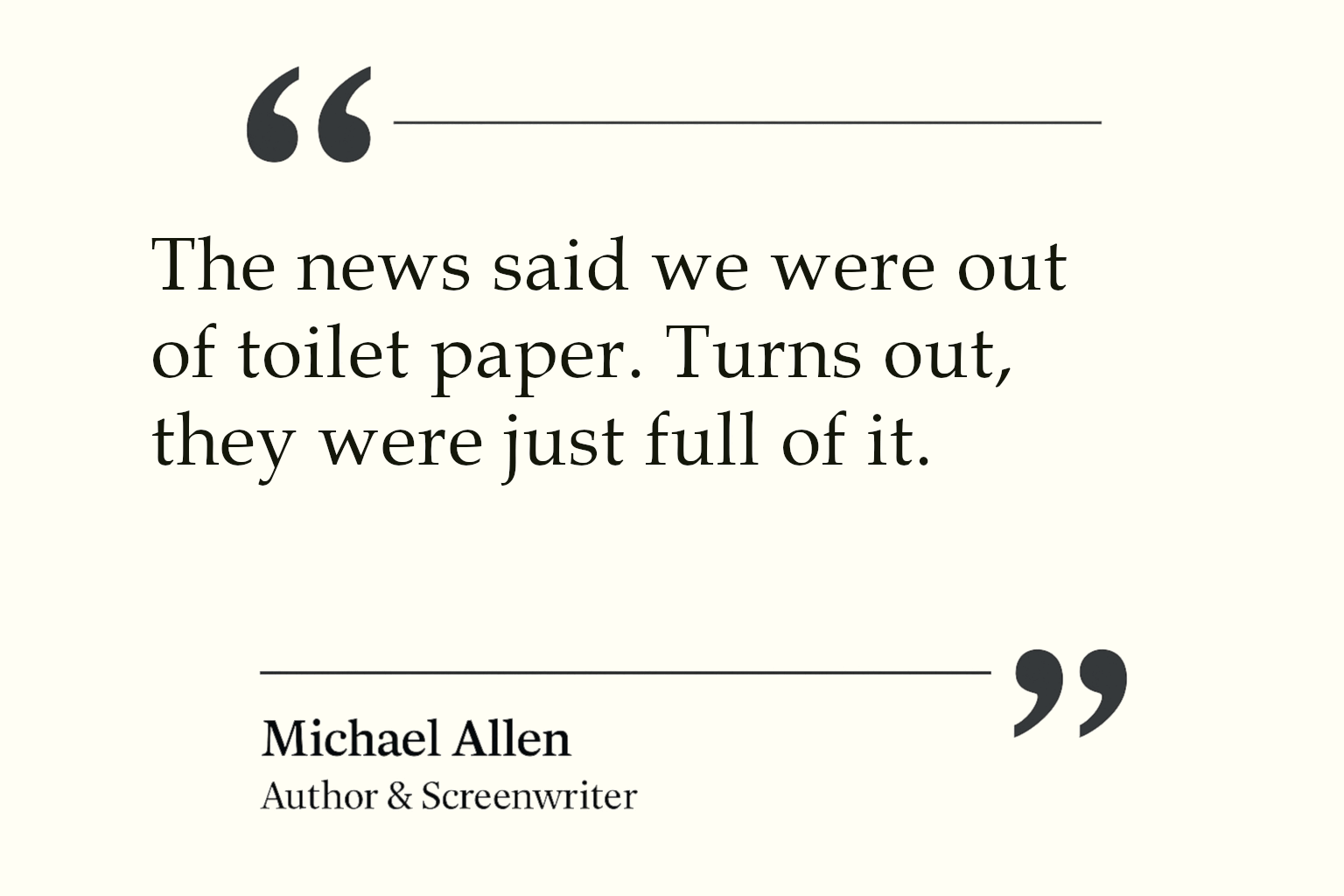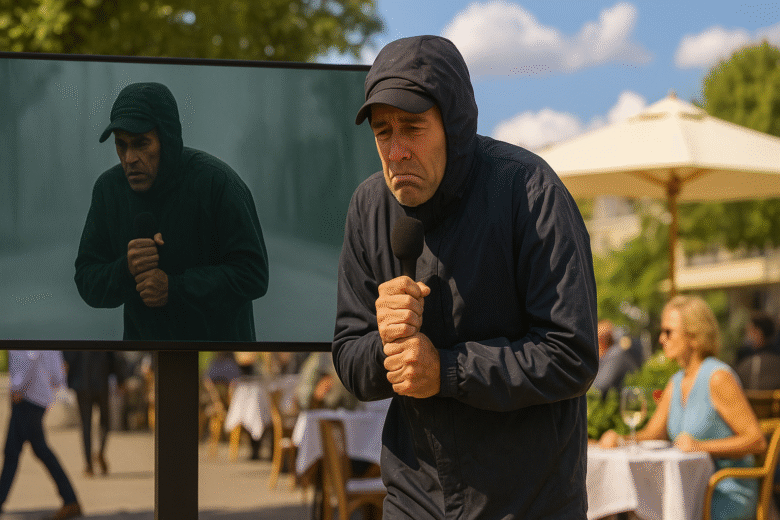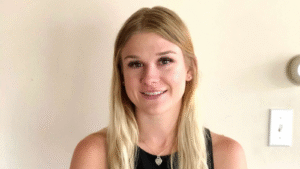If you judged the state of the world based solely on the evening news, you’d think we’re three bad days away from an apocalypse. Earthquakes, riots, crime waves, collapsing economies…etc. It’s doom in high definition, every hour, on the hour.
But then you walk outside. The sun’s out. A dog is licking itself. A barista jokes with a regular. Life, strangely enough, looks…fine. Pretty normal, actually. So why does it feel like the world’s falling apart?
It’s not just your anxiety talking. It’s the 24/7 media cycle pumping catastrophe into your brain like an IV drip. And the truth is, the world isn’t in nearly as bad a shape as the news wants you to believe.
Panic is profitable. Peace is boring. And the truth? That’s somewhere in between. It rarely makes the cut.
Disaster Porn is the News Business Model
“The news said we were out of toilet paper. Turns out, they were just full of it.”
The media doesn’t just report the news. It curates it, selecting the most dramatic, fear-inducing stories because fear keeps you watching. Ratings rise when emotions spike. Calm minds don’t click. But show a burning building, a screaming protester, or a weatherman clinging to a street sign? That’s engagement. And it’s not subtle.
Take the now-infamous clip of a reporter “battling strong hurricane winds”—wobbling dramatically on camera, looking like he might fly away—while, in the background, two guys stroll casually by in shorts and windbreakers. No urgency. No drama. Just a regular day in North Carolina.
Or the reporter in the boat. She’s paddling slowly through floodwaters, solemnly delivering a message about climate catastrophe. Then two people casually walk through the water in front of her. It barely reaches their ankles.
These aren’t honest mistakes. These are produced moments, crafted for drama but not truth. It’s not that the media is lying. It’s that they’re staging reality to match the narrative. And that’s even more dangerous.

Good News Doesn’t Sell, So It Gets Buried
“The truth didn’t die. It just stopped making ratings.”
Here’s what you don’t hear on the nightly broadcast:
- Global poverty has dropped dramatically over the last few decades.
- More people today have access to clean water, electricity, and healthcare than ever before in human history.
- Life expectancy is up. Infant mortality is down. Literacy rates are soaring.
- Violent crime? In many areas, it’s been steadily decreasing for years.
But don’t expect a breaking news banner for “Crime Down Again: Families Safely Eat Dinner.”
It’s not just that the news is bad, it’s that bad news is the only news you’re shown. The rest gets left on the cutting room floor because calm doesn’t go viral.
This Is Your Brain on Fear
“These days, the only thing breaking on the news is trust.”
All of this has a cost, and it’s not just frustration. It’s mental health. According to psychologists, consuming a steady stream of negative news can lead to increased levels of stress, anxiety, depression, and hopelessness.
There’s even a name for it, and it’s called headline stress disorder. We’re biologically wired to respond to threats, so when the news serves us a buffet of fear every day, we internalize it. We assume the world is burning, even if our personal lives are fine. The news used to tell us what happened. Now it tells us what to fear.
The Real Danger: A Distorted Worldview
“I want a weather report that doesn’t scream like it’s auditioning for Broadway.”
Much like how the media turned a rare sinkhole event into a frightening spectacle, the industry consistently peddles panic at the expense of truth. When you’re told the world is chaos, you start to believe there’s nothing you can do about it. That’s called learned helplessness, the idea that everything is broken and no amount of action will help. That mindset is poison.
It leads to:
- Polarization: If everything’s terrible, we start looking for someone to blame.
- Outrage fatigue: Constant anger burns out the very people most capable of making change.
- Isolation: People tune out completely, feeling like nothing matters.
The irony? Most of the actual good in the world is happening on the small scale, like local communities solving problems, neighbors helping neighbors, and grassroots efforts making a difference. But you won’t see it unless you go looking for it.
So What Can We Do?
“I trust horoscopes more than headlines. At least astrology admits it’s guessing.”
You can’t change the media, but you can change how you view it.
- Take a news fast. Give yourself permission to go a day or a week without headlines.
- Balance your input. Follow outlets that practice solutions journalism; they report the problems and the efforts to fix them.
- Limit your time. Don’t doomscroll. Set a timer. Get the info you need, then log off.
- Go local. Most real change happens in your neighborhood, not in Washington, not on cable news.
- Ask this question every day: “Did the news tell me what’s really happening or what they knew would keep me watching?”
If the only thing you consume is poison, don’t be surprised when you feel sick.

It’s Not That Bad, They Just Want Us To Think It Is
The world has problems. No one’s denying that. But there’s a difference between honest reporting and fear-based storytelling. Between informing and manipulating. Between showing what matters and staging what sells. It’s time to see the game for what it is.
So next time you see a journalist yelling into the wind while the dog-walker in the background barely notices the breeze, just smile. You’re not crazy. You’re just learning how to see past the spin.




